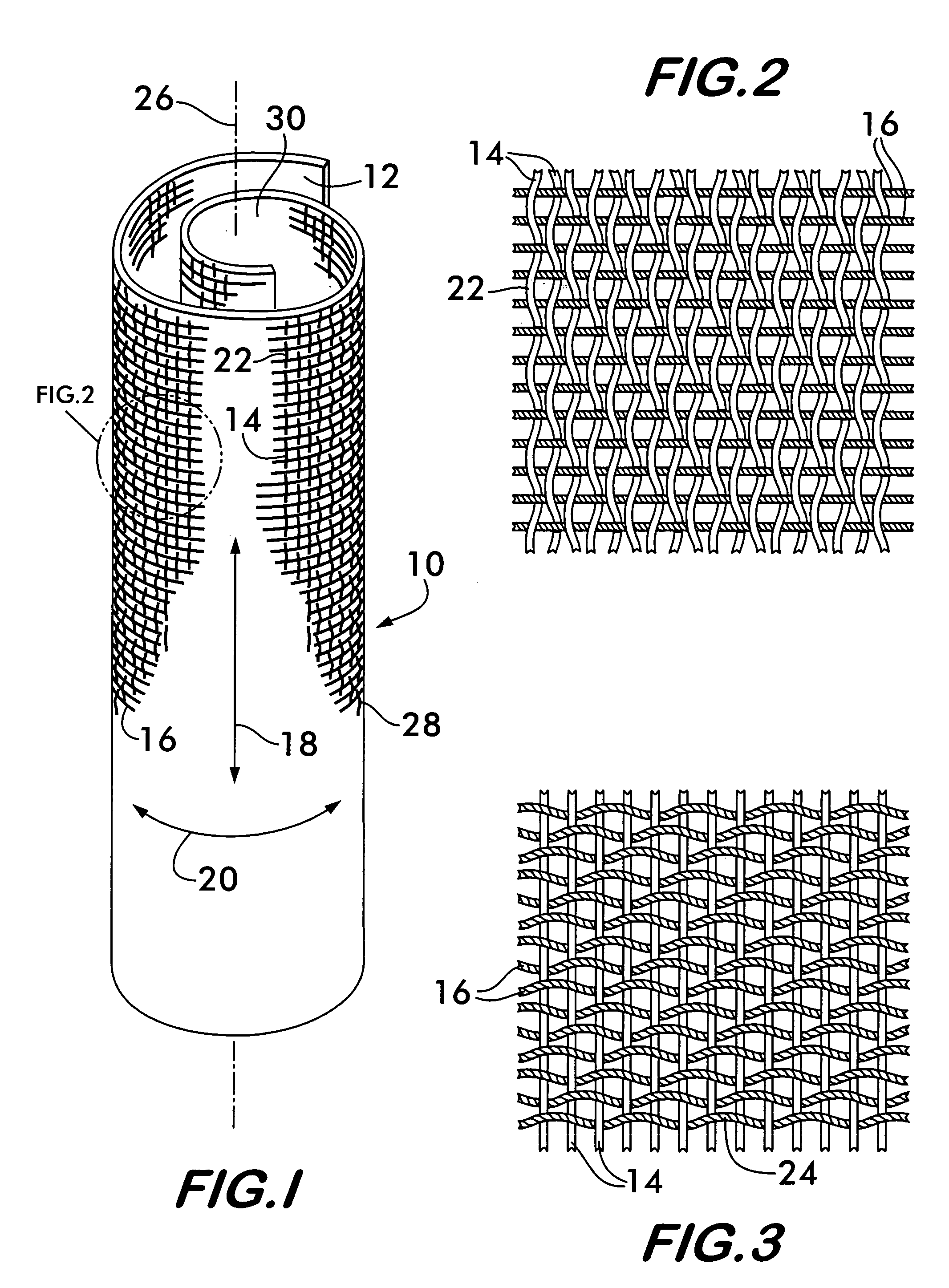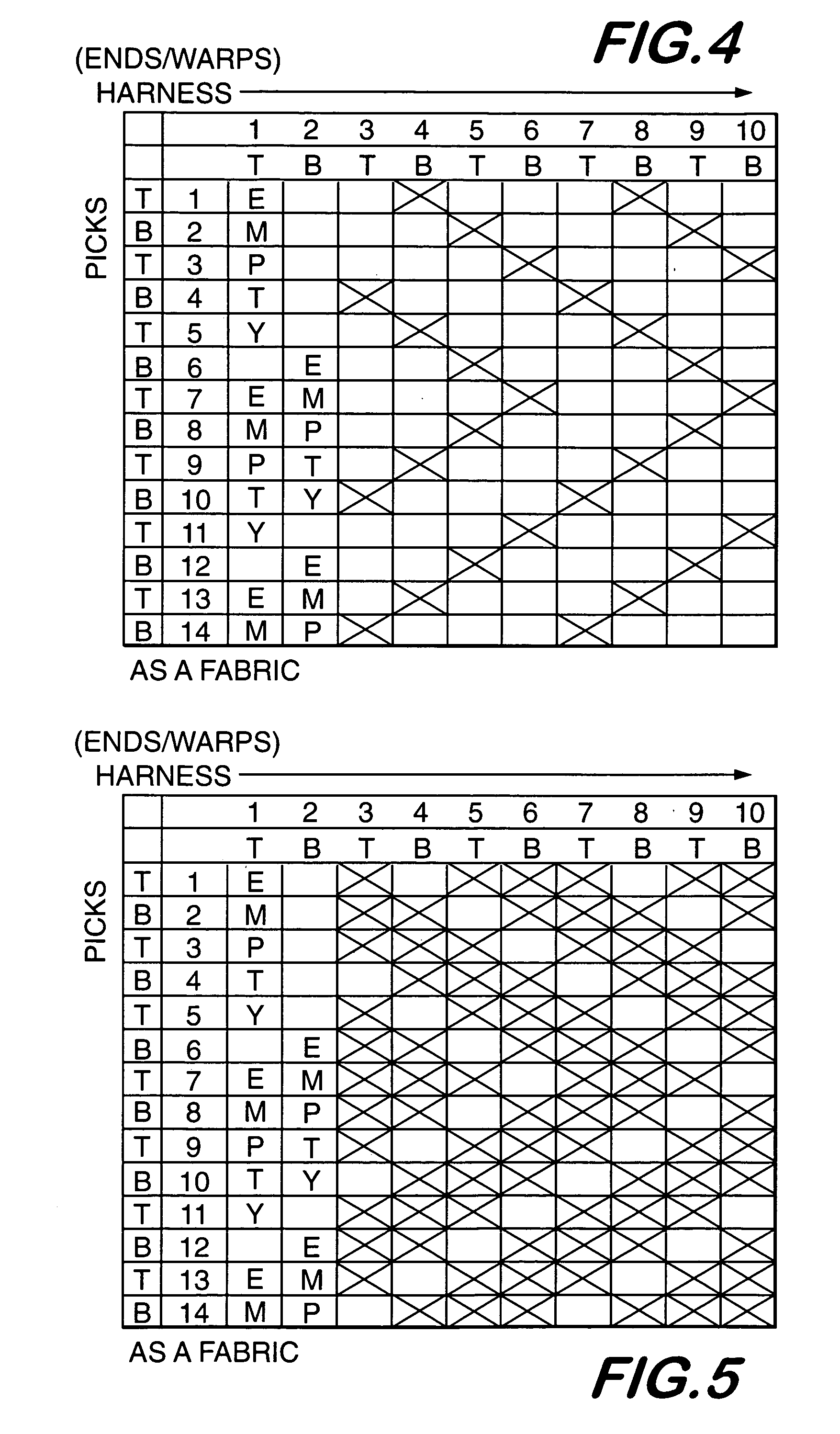Self-curling sleeve
a self-curling, sleeve technology, applied in the field of sleeves, can solve the problems of biasing, add to the cost and time required to produce the sleeves,
- Summary
- Abstract
- Description
- Claims
- Application Information
AI Technical Summary
Benefits of technology
Problems solved by technology
Method used
Image
Examples
Embodiment Construction
[0018]FIG. 1 shows a self-curling sleeve 10 according to the invention. Sleeve 10 comprises a substrate 12 woven from a plurality of monofilaments 14 and multifilament yarns 16. The monofilaments 14 are oriented in a first direction, shown by arrow 18, and the multifilament yarns 16 are oriented in a second direction, substantially perpendicular to the first direction, and indicated by arrow 20. Preferably, the monofilaments 14 are oriented in the warp direction of the substrate and the multifilament yarns are oriented in the weft direction and constitute the “fill yarns” or “picks” of the weave.
[0019]Preferred weave patterns for weaving the substrate 12 are those such as twills and satin weaves that form “floats” predominantly on one side of the substrate. As shown in FIG. 2, a “float”22 is formed when a filament or yarn, such as monofilament 14, crosses over more than one filament or yarn oriented perpendicular to it, such as weft yarns 16. The substrate is called “warp faced” whe...
PUM
| Property | Measurement | Unit |
|---|---|---|
| diameters | aaaaa | aaaaa |
| diameter | aaaaa | aaaaa |
| diameter | aaaaa | aaaaa |
Abstract
Description
Claims
Application Information
 Login to View More
Login to View More - R&D
- Intellectual Property
- Life Sciences
- Materials
- Tech Scout
- Unparalleled Data Quality
- Higher Quality Content
- 60% Fewer Hallucinations
Browse by: Latest US Patents, China's latest patents, Technical Efficacy Thesaurus, Application Domain, Technology Topic, Popular Technical Reports.
© 2025 PatSnap. All rights reserved.Legal|Privacy policy|Modern Slavery Act Transparency Statement|Sitemap|About US| Contact US: help@patsnap.com



